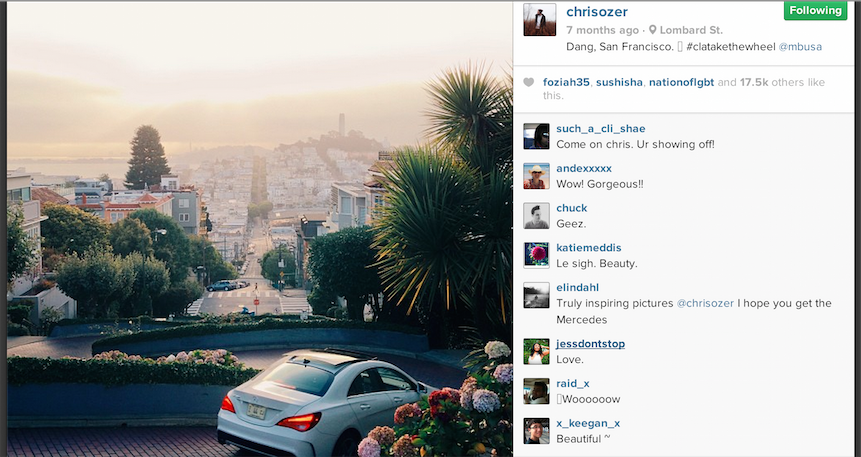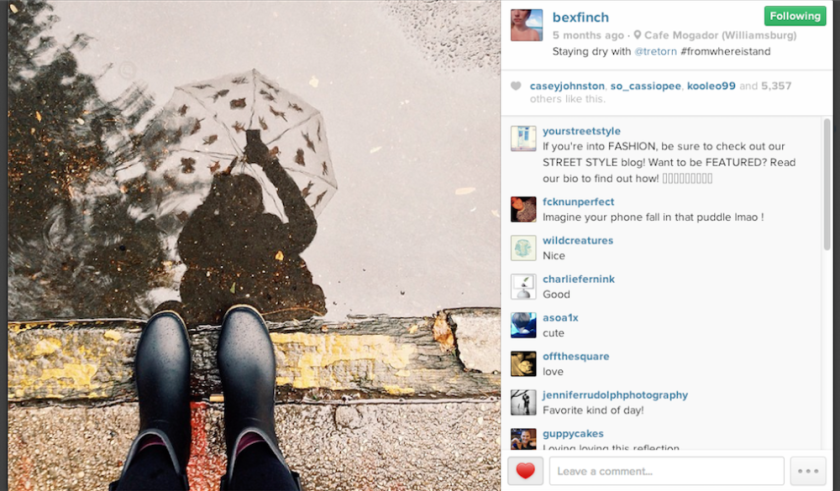 Advertising is a particularly visual medium, and as one of the premier photo sharing (and now video sharing as well) apps, Instagram has become a sought after advertising platform by a wide range of brands.
Advertising is a particularly visual medium, and as one of the premier photo sharing (and now video sharing as well) apps, Instagram has become a sought after advertising platform by a wide range of brands.
At the end of 2013 Instagram officially started advertising certain brands to their users, including Levi’s and Charity Water, brands that had already established a foothold in the service. However, the big brands aren't the only companies advertising over Instagram.
A multitude of professional photographers have also successfully used Instagram as a medium to gain brand awareness. For example, Micheal O'Neal (@moneal, 550,000 followers), a photographer and Instagram user who previews his work on the site, has received national attention for his artistic shots. In the fall of 2013 O'Neal shot a campaign for Vogue using his iPhone and models in famous locations like Grand Central Station. Other photographers who are prolific on Instagram have been hired to shoot ad campaigns for companies like Nike and La Mer, a luxury skin care company. There are many other photographers who, after popularizing certain styles and hashtags, have been noticed by bigger brands interested in being part of their work.
This system, using a popular spokesperson to help sell a product, is as old as advertising itself, and is now simply seeing revolution of sorts, fueled by social photo networks like Instagram. Even before Instagram officially began promoting ads, advertisers were paying popular individual users to get space on the app. This helped the brands advertising over this medium to give their ads a personal touch, which is part of the appeal of Instagram and has set a precedent for all advertising on the platform.
 In order to successfully advertise on Instagram, the image in question must be subtle and somewhat vague. The ostentatious and gaudy promotions that may initially spring to mind when thinking about advertisements are nowhere to be found, instead a pretty photo of the San Francisco may have a Mercedes in a corner of the frame, and a #benz hashtag to highlight it. This helps product promotion mingle with the rest of a user’s feed, and make it less likely to be glossed over while scrolling. The seemingly subversive nature of these posts may bother some, but they are arguably easier on the eyes than a glossy magazine spread, and the clever way directly funded work can hide in a stream is part of the genius of this particular marketing format.
In order to successfully advertise on Instagram, the image in question must be subtle and somewhat vague. The ostentatious and gaudy promotions that may initially spring to mind when thinking about advertisements are nowhere to be found, instead a pretty photo of the San Francisco may have a Mercedes in a corner of the frame, and a #benz hashtag to highlight it. This helps product promotion mingle with the rest of a user’s feed, and make it less likely to be glossed over while scrolling. The seemingly subversive nature of these posts may bother some, but they are arguably easier on the eyes than a glossy magazine spread, and the clever way directly funded work can hide in a stream is part of the genius of this particular marketing format.
Visit Ars Technica for more detailed information.


